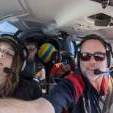Parking Brake not working = no fluid!!
-
Members Online
- tankles
- Grant_Waite
- ZMERC
- kowabunga
- EricJ
- Utah20Gflyer
- Stubby
- glbtrottr
- PeterRus
- 201Mooniac
- StevenL757
- Pinecone
- Jeremyjford
- AaronDC8402
- IvanP
- ElkoRandy20J
- acekng1
- Lois
- Shadrach
- richardbrochu27
- Entropy
- Ryan ORL
- Rwsavory
- wombat
- Ned Gravel
- donkaye
- toto
- exM20K
- Jeph357
- Mooney in Oz
- TCC
- ResumeNormalSpeed83
- hypertech
- philiplane
- N201MKTurbo
- jordanjms
- buddy
- Ibra
- PT20J
- ta2too
- siouxpilot77
- Captainhog


Recommended Posts
Join the conversation
You can post now and register later. If you have an account, sign in now to post with your account.